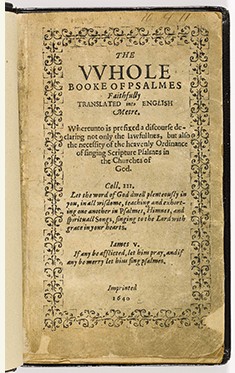
Kraken Opus is releasing a book about Sachin Tendulkar with a signature page made with his blood in the paper pulp!
The fine skills that make up the hand-crafted art of book-printing and book-binding have been appreciated for centuries, despite the flood of the market with standard issue reading copies since the invention of the printing press and later industrialization. Fine craftsmanship of books created for the few rather than the masses is no longer the norm, but these original, unique products are perceived as a prized investment rather than just a rag to read.
Creating fine art allows for modification, for personalization of the work being done. Each item can be unique and different and completely invested in by the artists. This is why there are many astoundingly beautiful categories of Art Books: specialty bindings, fore-edge painting, gilt books, books printed in strange shapes and via different techniques than the standard paper and ink job…even books printed using blood.
Yes, blood. With this ode to art printing in mind, take a look at Kraken Opus, a luxury publishing house that is raising the bar on extravagance in the high-end book market. Kraken’s small, high-quality releases command prices generally reserved for fine art works.
Kraken Opus will be releasing a book in February about the famed cricketer Sachin Tendulkar. For this limited edition book, Mr. Tendulkar donated a pint of his blood to be mixed with the paper pulp that creates the signature page. This lovely book contains 800 pages edged in gold leaf, over 1000 illustrations, and will be released in a silk-covered clamshell box. The 10 limited-edition copies, which come out in February 2011, cost $75,000 each and have already sold out.
But that is not the only bloody book out there. The Islamic government is quite puzzled over what to do with the pages of the Bloody Qur’an, a version of the holy book that Saddam Hussein had transcribed in his own blood for his 60th birthday.
“My life has been full of dangers in which I should have lost a lot of blood…but since I have bled only a little, I asked somebody to write God’s words with my blood in gratitude,” President Saddam Hussein said in a letter published by the Iraqi official media in 2000.
Over two years in the late nineties, Hussein donated over 27 liters (over 7 gallons) of his blood to use as ink by an Islamic calligrapher, Abbas Shakir Joody al-Baghdadi, who transcribed the Islamic holy book at his command, even though this practice is haraam, or forbidden, by Islam.
Since the fall of Baghdad, most of the statues and other public displays erected by the fallen dictator have been dismantled and removed, but as it is also haraam to throw out or destroy copies of the Qur’an, the Iraqi government is uncertain how to proceed with this very strange and very powerful book. It is so touchy a situation that to be allowed to view the Bloody Qur’an requires approval from a committee, and the three keys that open the vault are secretly hidden throughout Iraq.
The exquisitely crafted book will remain under lock and key until the government committee on historical artifacts and the dubious legacy of Saddam Hussein decides how to proceed with this unique work of religious art.
Even still, there are other bloody books out there that are much more affordable. If fine art and politics aren’t your game, what about 1970’s heavy metal?

KISS mixed their blood with red ink to create this 1977 comic
At the height of KISS fame in 1977, Marvel Comics published a full-color comic book with the heavily painted band members starring as superheroes. Under the eye of a notary public, blood from each member of KISS was drawn by a registered nurse and poured with great media fanfare into the vats of red ink used for printing the comic at Marvel’s Borden Ink plant in New York.
You can find copies of the Marvel Comics Super Special of KISS for sale on Biblio as well as other venues. They tend to be sold from $80-$200 depending on condition, and whether or not the original poster is still included.
If that is not enough for you, just contact the folks at Ko-Sin publishing (if you speak Japanese, that is). This Tokyo-based printer has developed a process using a special ink that includes DNA extracted from hair or fingernail samples (from any human or animal) provided by the author. Title pages are then printed with the DNA ink, which does not change the appearance of the page, and furthermore, the genetic information from the DNA is extractable by lab technicians.








Thanks for your blog, really exciting